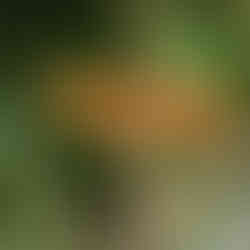A Pedacito of Ruta de Flores in El Salvador
- Michael Acevedo

- Jul 21, 2020
- 6 min read
Updated: Jul 1, 2021
I was a bit unsure what there was to do in El Salvador, but in 2019 I was on a mission to see as much of the nearby world as I could. See, I have traveled quite a bit, but there is so much more to see, and what could be better than experiencing a destination that is within a 3-hour plane ride?
Ruta de Flores, Spanish for "The Flower Route", is a 20 mile stretch of Western El Salvador along Route 8 that winds through several colorful villages beginning in Sonsonate and ending in Ahuachapan.
The name comes from the flowers that grow in this region, and if you time it just right, you will be immersed in a true wonderland of flowers. I didn't go during that season but that didn't make the road trip from San Salvador any less memorable.

Visiting El Salvador in August of 2019 meant that there were not many tourists, so many tour operators ended up canceling tours if minimum numbers were not reached. However, sometimes you get lucky and end up on a private tour even though you paid for a small group tour; that's what happened to me. The driver/tour guide picked me up in his small sedan on a clear Thursday morning from my hotel in San Salvador.

We set off for a day of sightseeing, both natural and manmade, and I was ready to see what El Salvador was all about. We drove for about 45 minutes and left behind the hustle and bustle of San Salvador.
We were headed to one of the national parks for a hike with incredible views of three volcanoes: Izalco, Cerro Verde, and Santa Ana. Along the way, we pulled over to take in the view of the volcanoes in the distance, on a small country road where one side was a field of sugar cane and the other side a field of corn.
El Salvador's Lago de Coatepeque
There is a lot of corn in El Salvador! Almost all flat land appeared to be miles of cornfields. My guide told me that even though they produce a massive corn crop year-round, it pretty much all stays within the borders to feed the people's insatiable appetite for the crop.
It's no wonder that everything comes with fresh tortillas! We set off once again towards Parque Nacional Cerro Verde for a pretty brief hike through the forest. We briefly stopped for a glimpse of Lago de Coatepeque, which is a massive lake covering 10 square miles in a crater of a Caldera volcano.

Parque Nacional Cerro Verde in El Salvador
We reached the park entrance where a small deck provided an exceptional view of two of the volcanoes. The breeze was nice a cool as the sun hadn't had enough time to make it too hot. There were big fluffy clouds not too far above us and we can really take in the views of the fertile valley at the base of the volcanoes.


The hike was very easy and was much more like a walk in the woods. The beautiful canopy of the trees kept us shaded from the noon sun and cool. I came across some really great signs that I feel are worth sharing. The first one says "Una Ventana ala Naturaleza" which translates to "a window into nature".
The second one starts with " En este bosque no hay Wi-Fi", which means "in this forest, there is no Wi-Fi". It ends with "pero aqui encuentraras una major connexion", which translates to "but here you will find a better connection". I just love this...
We found an overlook about halfway through our walk and decided that we should sit and take it all in. There were breathtaking views of the valley and volcanoes. I love these moments where you can just be quiet, listen, and remind yourself that you are lucky to be able to have experiences like this.
While the clouds came toward us, carried by the breeze created as the volcano slopes towards the sky, I managed to capture a butterfly in flight. I'm not sure if he was enjoying this or struggling, haha! Either way, it was pretty cool. After our "hike", I stopped in the park's cafe for a nice coffee with an incredible view of Volcan Izalco. Could you ask for a better place to enjoy some coffee?!

Eating Sopa de Gallina in Caluco, El Salvador
We drove past many more miles of cornfields until we reached the small town of Caluco, El Salvador. Here we parked on the side of the road to have a local favorite: Sopa de Gallina. The restaurant, "El Comedor Rosario", is an open-air pavilion with a dining area and kitchen attached. You can start your meal off with some fresh corn tortillas with salt, onion, a block of crumbly cheese, and a squeeze of lime.
The main affair is the expertly cooked rustic soup, which is a light broth with vegetables and a little meat, probably pork. The main affair is the roasted gallina, a true free-range hen, which was roasted in a rustic oven field by logs collected nearby.
The chicken had a very crispy skin and was very lean compared to what I was used to eating. The soup was light and fresh, yet satisfyingly hearty. I added a little lime and housemade hot sauce to really set it off.
Ruta de Flores: The Town of Nahuizalco, El Salvador
After lunch, we drove into the town of Nahuizalco, a village of pre-Hispanic origin. It was originally inhabited by the Pipil people, and in colonial times, the region was part of the Izalco providence.
A chronicle in 1586 estimated that there were less than 200 people living in Nahuizalco and as of 2007, there were more than 49,000 residents. This long history can be seen through the architecture and traditions of the people in the town.

We stopped in the town square and briefly explored the Mercado Municipal. If you know me, you know I love me a good market! You can learn so much about the culture by what's on display. You can see the local produce and meats, plants and flowers, and even how artistic the community is.
Inland communities tend to have a healthier selection of fresh fruits and vegetables and their meat is usually farm animals like cows and chickens. Coastal communities have much less selection of local fruits and vegetables but even how they import those from internal parts of the country is interesting. As expected, the local market had a beautiful cross-section of what makes Nahuizalco special.
After a stroll through the market, I walked around the central plaza and into the Iglesia San Juan Bautista (you know, every town square must have a cathedral).
Ruta de Flores: The Town of Juayúa, El Salvador
We were back in the car for another 20 minutes or so until reaching Juayúa. Founded in 1577, this small town is famous for its black Jesus statue in the Iglesia Santa Lucia adjacent to the town's central plaza.

My guide told me about a world-renowned food festival that occurs in this town each year, featuring hundreds of local, national, and international tourists. During the Feria Gastronomica, the restaurants and street vendors of Juayúa share traditional dishes such as pupusas, tamales, chicken soup, and much more. Oh, how I wish I would have been there during the weekend... I would have eaten it all up!
Ruta de Flores: The Town of Apaneca, El Salvador
Another 20 minutes down the Ruta de Flores, we cross into the Ahuachapán Department and its first town of Apaneca. This town only has about 9,000 inhabitants as of 2006 but has lots of culture to share with visitors. Roaming the cobblestone streets I found lots of excellent murals and street art, and a variety of architecture.
We didn't spend too much time here and there were hardly any people out and about. Nevertheless, I still enjoyed my stroll through the town and can imagine there are more lively times to visit, like the weekend.
Ruta de Flores: The Town of Concepción de Ataco, El Salvador
The last stop on the Ruta de Flores for the day was in Ataco. Derived from the Nahuatl language, Ataco means "high place of springs.” Its population has a pre-Columbian origin and was founded by the Yaqui Indians or Pipal, currently over 18,000 Salvadorians call this home. I really enjoyed Ataco as it seemed to be more lively compared to the other town along the route.

Ataco began investing in tourism around 2004 and it seems to have been money well spent because there were several tourists roaming the streets, including me. Lots of bars, restaurants, and shops had their doors open trying to draw you in with their small crowds and lively ambiance.
We took a moment to visit the shop of a traditional candy maker, Santuario Inmaculada Concepción de María, and the art gallery of Hermanos Fabru's (I snagged one of these for my house).
This was a great day trip from San Salvador. It really gave me an opportunity to see a variety of small towns in a relatively short period of time. I enjoyed getting to see more about what El Salvador has to offer and I hope it inspires you to step out of your comfort zone and visit a place that you might have otherwise skipped.
Want to know more? Are you interested in becoming a contributor for Pedacitos? We'd love to hear your stories! Send me a message and I will get back to you!















































































































































































































Comments